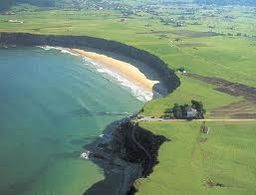Green pearl of Spain located on the Cantabrian coast in the north of the country, Cantabria, alternates magnificent landscapes and historical treasures as well as gastronomic and artistic. With its 10 UNESCO World Heritage caves, 60 white sandy beaches, ski spots and legendary friendliness, Cantabria is a multifaceted holiday destination.
Nature destination par excellence, Cantabria is a succession of varied landscapes, from summits to forests, passing by its immense beaches, its valleys, its rias and its cliffs, it will surprise you by its richness. Its coves, fishing ports and traditions are very similar to those of the Basque Country.
Stroll through the region via the hiking trails and north coast roads lined with turquoise water, green pastures and white sand, to lose yourself in its picturesque little villages, from Laredo to Castro Urdiales or Santona (famous for its anchovies), and finally settle down in Santander. Capital of the Cantabrian region and famous seaside resort, it is appreciated for its contemporary art museum. Spanned towards the sea and nautical activities, Santander offers you to contemplate a sumptuous bay bordered by the calm waters of the Atlantic Ocean. From "Playa de los Peligros" to "El Sardinero", make a stopover for relaxing breaks on the side of the Magdelana Peninsula, famous for its Royal Palace perched on a rocky promontory facing the ocean. If the sun is not always at the rendezvous along the coast contrary to the other large Spanish seaside regions (often overcrowded), here, the beaches of fine sand follow one another and are worth a visit. Continue your journey in the direction of Torrelavega (2nd most populated city in Cantabria) 25 kilometres from Santander, and take a tour around Santillana del Mar. Situated on the Route of Santiago de Compostela, this medieval town is of astonishing splendour. Its Renaissance palaces, defence towers and unique architecture make it one of the most important historical centres in Cantabria. Just next door, Comillas seduces as much as it surprises : artistic and historical site, it sees in its streets the succession of the manors, the towers and the modernist constructions all more fascinating the ones than the others. "El Capricho" built by Gaudi, the Pontifical University or the Palace of Sobrellano are among the most astonishing constructions not to be missed under any pretext. Comillas as Santillana del Mar being surrounded by the Natural Park of Oyambre, they will allow you beautiful excursions along its coasts to the striking beauty. Don't forget to go for a walk on the beaches of Oyambre at the foot of the cliffs, to enjoy moments in the calm of the rias (like those of La Rabia or San Vicente). On the beaches of Comillas where the atmosphere seems to be marked by "hippie" notes, surfing is resolutely king : it is even said that this is where Spanish surfing was born. Not far from there is the village of Altamira, one of Cantabria's most famous destinations : if the region is so famous, it is also thanks to its prehistoric caves, and Altamira is home to one of the most remarkable in the whole region. Considered the "Sistine Chapel of Rock Art" and listed as a UNESCO World Heritage Site, it contains rock art dating back more than 14,000 years. Continue your journey towards the snow-capped peaks of San Vincente de la Barquera : an ancient fishing village, this seaside town offers an absolutely superb picturesque setting to anyone wishing to appreciate its charms. With its houses lined up along the Cantabrian coast and the snow-covered peaks of the Picos de Europa in the background, the spectacle is breathtaking. If the old village with its churches, castles and ramparts is worthy of interest, it is its beaches and its proximity to the mountains that make it so beloved. In summer and winter, the Picos de Europas mountains (one of the main mountain ranges in Spain) are the scene of snowshoe excursions and many afternoons dedicated to snow sports, from skiing to snowboarding and ski touring. Finally, Laredo and its beach "La Salvé", Santoña and its monastery, Noja and its marshes and Castro Urdiales and its castle-lighthouse are to be added to the list of sites to visit during your stay in Cantabria.
In addition to all these natural and architectural discoveries, you will discover local flavours : when you visit Cantabria, you will have to taste "cocido montañés", "cocido lebaniego" (a kind of stew), but also dishes made from trout, salmon and seafood caught in the Cantabrian Sea, sobaos and quesada pasiega. Finally in Cantabria, cheese is almost a religion : so it will not be uncommon for "queso de nata" (cream cheese), Picon de Bejes-Tresviso or "quesucos" to be found on your plates.







